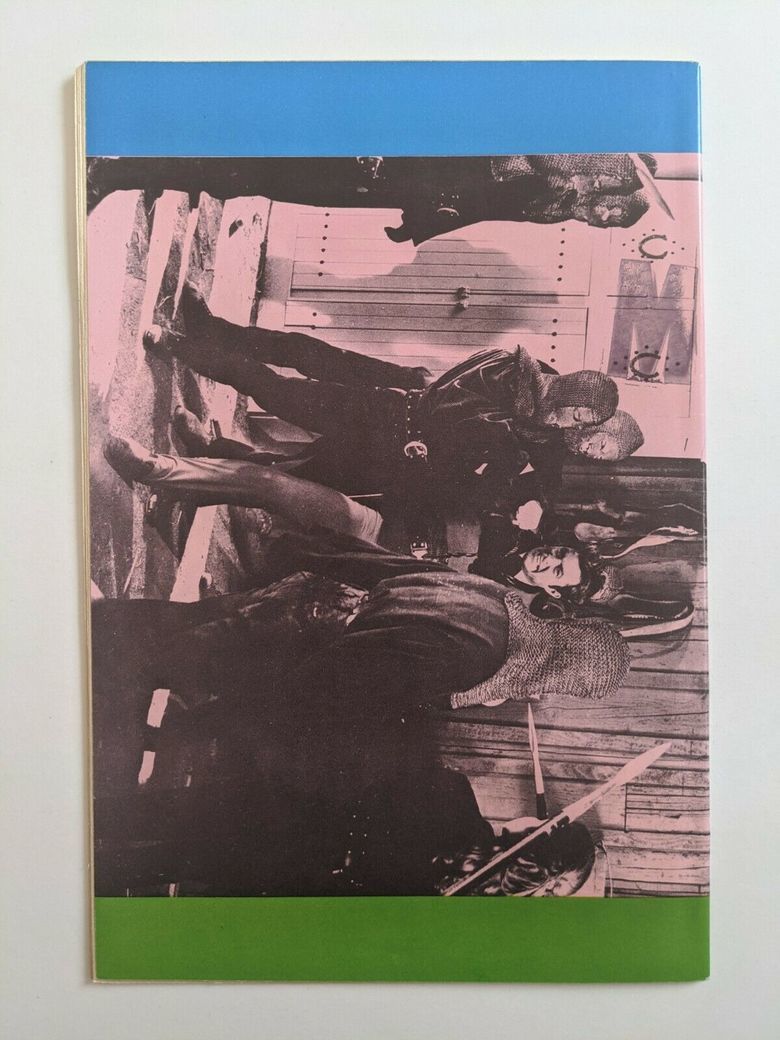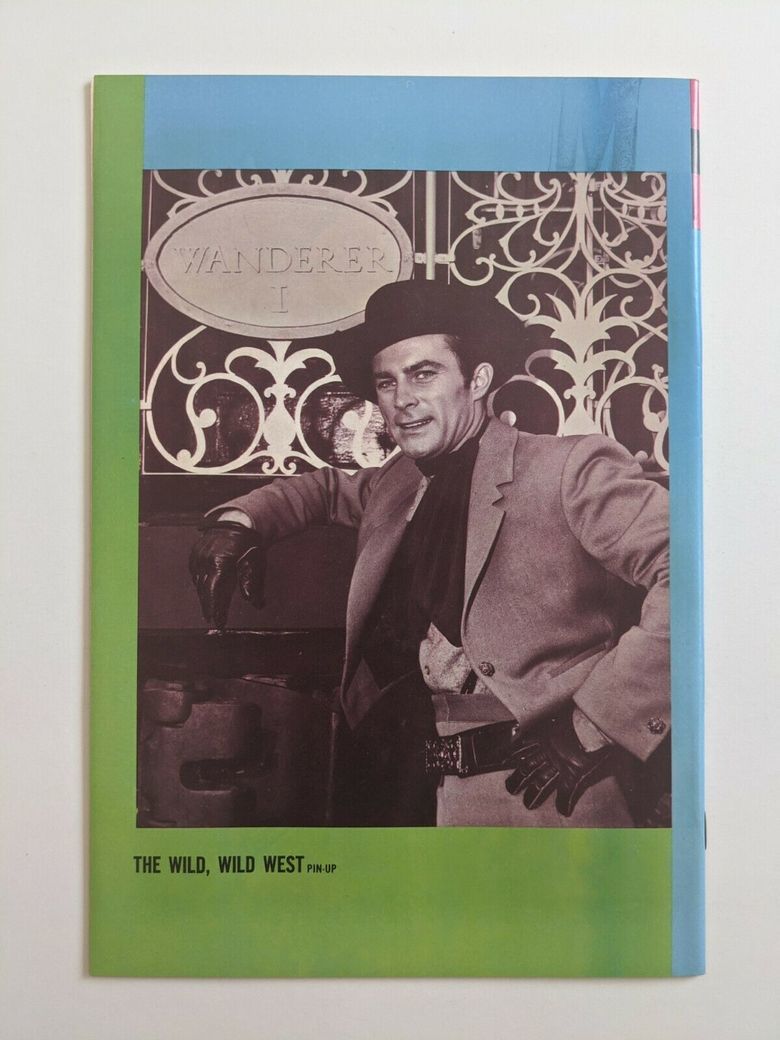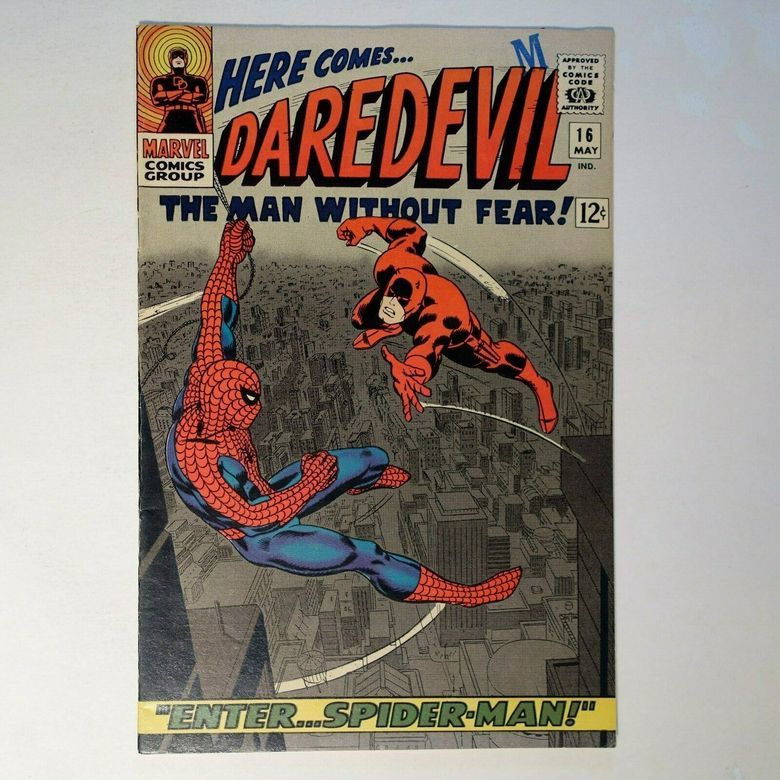Distribution Mark?11988
Pages:
1
 I'm waiting.... (tapping fingers). I'm waiting.... (tapping fingers).Splotches is gettin old! |
Nuffsaid111 private msg quote post Address this user | |
| Anyone know what this giant "M" marking is on these books? I know of date stamps and distributor spray but was wondering if anyone had information on something like this? (and if it would kill a grade)   |
||
| Post 1 • IP flag post | ||
 past performance is no guarantee of future actions. past performance is no guarantee of future actions.
|
KatKomics private msg quote post Address this user | |
| Store stamp maybe??? You can still get 9.8's with small dates/initials...not sure how these would affect things. On the back so inconspicuous =good....but a bit on the large side, although the one where it is in the blue margin doesn't interfere with the pin-up.... |
||
| Post 2 • IP flag post | ||
 Forum Crier Forum Crier
|
OGJackster private msg quote post Address this user | |
| @KatKomics I second that. My guess would also be a store stamp and not a distributor. Here is some online background history... clickable text Background: Before the direct market, most comic books were distributed through newsstands, pharmacies, and candy stores. The major distributors during this period included American News Company and the DC Comics property Independent News. Charlton Comics had their own distributor, Capital Distribution Company (CDC).[6] This practice lasted from the 1930s through the 1960s. 1960s and 1970s: The underground comix movement of the late 1960s was part of an alternative distribution network that also served the underground press, which proliferated in the mid-1960s. As underground comix were not sold in newsstands or drugstores, head shops played an important role as retailers of those publications.[7] The underground comix movement was based in San Francisco and a number of distributors originated in the Bay Area, including the Print Mint (beginning c. 1969), the already mentioned comic book store San Francisco Comic Book Company (which doubled as a publisher, beginning c. 1970), Bud Plant Inc. (1970), Last Gasp (1970), Keith Green/Industrial Realities (c. 1970), and Charles Abar Distribution. Around 1970, underground distributors sprang up in various regions of the U.S., including Los Angeles — George DiCaprio and Nova — and the Midwest — Donahoe Brothers Inc. (Ann Arbor, Michigan), Keep On Truckin' Coop/Big Rapids Distribution (Detroit, Michigan), Wisconsin Independent News Distributors (Madison, Wisconsin), Isis News (Minneapolis, Minnesota), and Well News Service (Columbus, Ohio).[8] By the mid-1970s, Big Rapids had acquired all of its midwestern competitors; by that time, the market for underground comix had essentially dried up.[7] The direct market as we know it was created in the early 1970s in response to the declining market for mainstream comic books on newsstands. Fan convention organizer and comic dealer Phil Seuling approached publishers in 1972 to purchase comics directly from them, rather than going through traditional periodical distribution companies. Unlike the newsstand, or ID (for independent distributor) market, which included drugstores, groceries, toy stores, convenience stores, and other magazine vendors, in which unsold units could be returned for credit, these purchases were non-returnable. In return, comics specialty retailers received larger discounts on the books they ordered, since the publisher did not carry the risk of giving credit for unsold units. Instead, distributors and retailers shouldered the risk, in exchange for greater profits. Additionally, retailers ordering comics through Seuling's Sea Gate Distributors (and within two years, through other companies) were able to set their own orders for each issue of each title, something which many local IDs did not allow. This ability to fine-tune an order was crucial to the establishment of a non-returnable system.[9] Direct distributors typically were much faster at getting the product into the hands of their customers than were IDs: a direct distribution warehouse generally had re-shipped a weekly batch of comics or delivered it to local customers within a day or two (sometimes within hours) of receiving the books from the printer. By contrast, most IDs would usually take two or even three weeks to do so, though some moved more quickly. This factor was a strong drawing card for retailers whose customer base consisted principally of fans eager to see the new issues each week. Finally, another factor in creating demand for direct sales distribution was that many IDs refused to deal with comics specialty shops or with any retailer who dealt in back issues on any terms at all, fearing that used comics could be purchased by these shops from readers for pennies, and then cycled back through the system as returns for full credit at a profit. By the mid-1970s, other direct sales distribution concerns had sprung up, mostly regionally based (Donahoe Brothers in the Great Lakes region, Pacific Comics Distributors in Southern California, and New Media/Irjax in the Southeast were all operating by early 1974), essentially replacing the order-taking and fulfillment functions of newsstand distributors for the infant comic shop specialty market. For several years, Seagate retained an edge over its competitors in that it was able to provide "drop shipping" (the shipment of an order directly from the printer to the retailer) to its customers for quantities of 25 or multiples thereof per issue, while the newer distributors had to use more conventional methods, putting together customer orders and re-shipping or delivering them from their own warehouses. Threats of legal action[10] and the need for retailers to order very precise (and sometimes very small) quantities of items ended this practice for all but the largest customers by the end of the 1970s, and extended the ability to provide drop shipping to those large customers to all the direct distributors — by which time several of the newer distributors had multiple warehouses. Newsstand distribution through the IDs continued at the same time (and indeed remained dominant for years afterward, on its conventional returnable, low-discount terms). |
||
| Post 3 • IP flag post | ||
 Forum Crier Forum Crier
|
OGJackster private msg quote post Address this user | |
| The link above also has a list of distributors from 1970 on. The Gold Key book you showed us, I'm guessing is from around 1967? That would narrow down the list considerably. | ||
| Post 4 • IP flag post | ||
|
|
cyrano0521 private msg quote post Address this user | |
| Stamps generally only deduct 0.1, unless massive or on inside pages as well. They do not actually damage the book, so are minimal deductions. | ||
| Post 5 • IP flag post | ||
 Why just the women? I like bears. Why just the women? I like bears.
|
Gaard private msg quote post Address this user | |
Different font & a smidge smaller, but still an 'M'. |
||
| Post 6 • IP flag post | ||
 I'm waiting.... (tapping fingers). I'm waiting.... (tapping fingers).Splotches is gettin old! |
Nuffsaid111 private msg quote post Address this user | |
| Interesting. None of the content in the wiki begins with an "M". However, the seller of these books is in Canada and there is a "Multi-Book and Periodical" Store/Distributor. So perhaps that is the missing link. Dunno Thanks everyone for the feedback though |
||
| Post 7 • IP flag post | ||
 I bought a meat grinder on amazon for $60 and it's changed my life. I bought a meat grinder on amazon for $60 and it's changed my life.
|
kaptainmyke private msg quote post Address this user | |
| Could be a kid who stamped the "M" as an identifier. | ||
| Post 8 • IP flag post | ||
 I'm waiting.... (tapping fingers). I'm waiting.... (tapping fingers).Splotches is gettin old! |
Nuffsaid111 private msg quote post Address this user | |
| I love the book, but just don't know how much it would be knocked down in grade with that M. I know the motto "Buy what you like and you'll never be disappointed"... well... I tend to disagree. I'd be disappointed if this was typically a (say a 9 something) and got railroaded down god knows how much for the stamp. It's not about what I think the grade is. It's about what the professionals think the grade is |
||
| Post 9 • IP flag post | ||
 Collector Collector
|
Batworldfan private msg quote post Address this user | |
| Can someone explain this: a graded Batman Adventures #12, 9.6, BOA ask $400, sold on eBay 05/06/2020, received a CGC green/Qualified label, and it says "Stamp On Front Cover", and it does have a weird red stamp on it. Now I'm not sure, about how to value raw books with stamps? |
||
| Post 10 • IP flag post | ||
 I'm waiting.... (tapping fingers). I'm waiting.... (tapping fingers).Splotches is gettin old! |
Nuffsaid111 private msg quote post Address this user | |
Quote:Originally Posted by Batworldfan Exactly this. Green label with no deductions, blue labels with deductions, blue labels with barely a deduction, etc... |
||
| Post 11 • IP flag post | ||
 Collector Collector
|
Doc_Cop private msg quote post Address this user | |
| Touche Gaard on that first Romita Spider-man issue. And OGJackster thanks for sharing the knowledge! This community rocks! Nuff said, I say go for it... | ||
| Post 12 • IP flag post | ||
Pages:
1This topic is archived. Start new topic?
